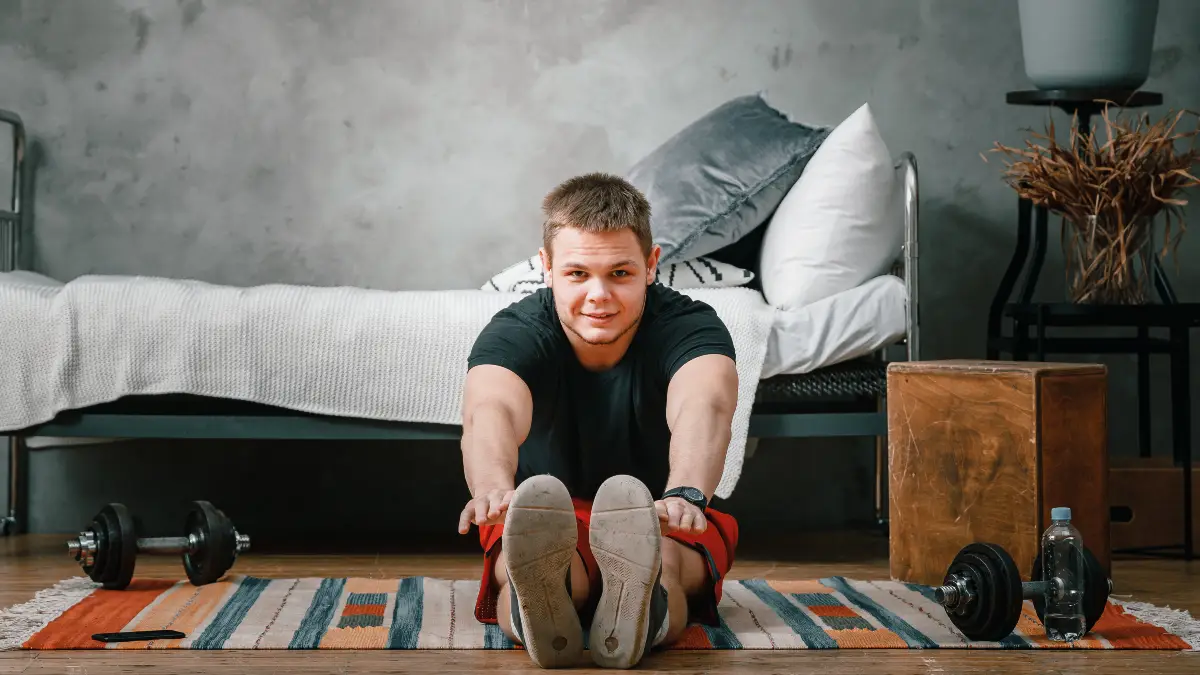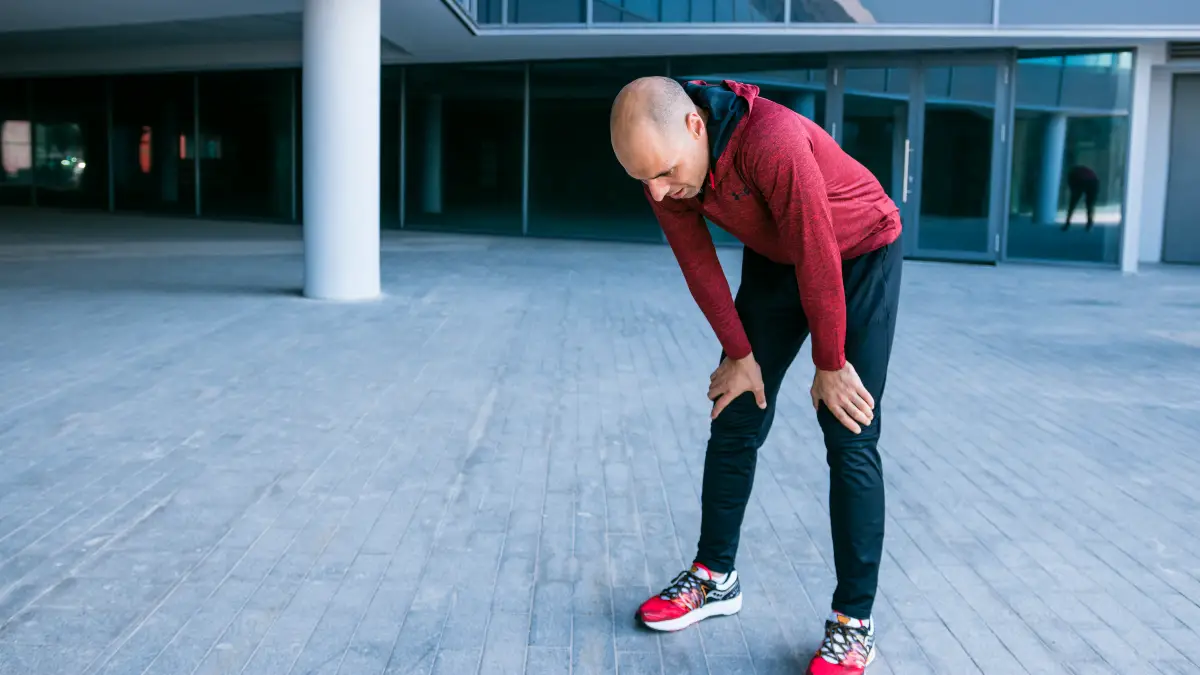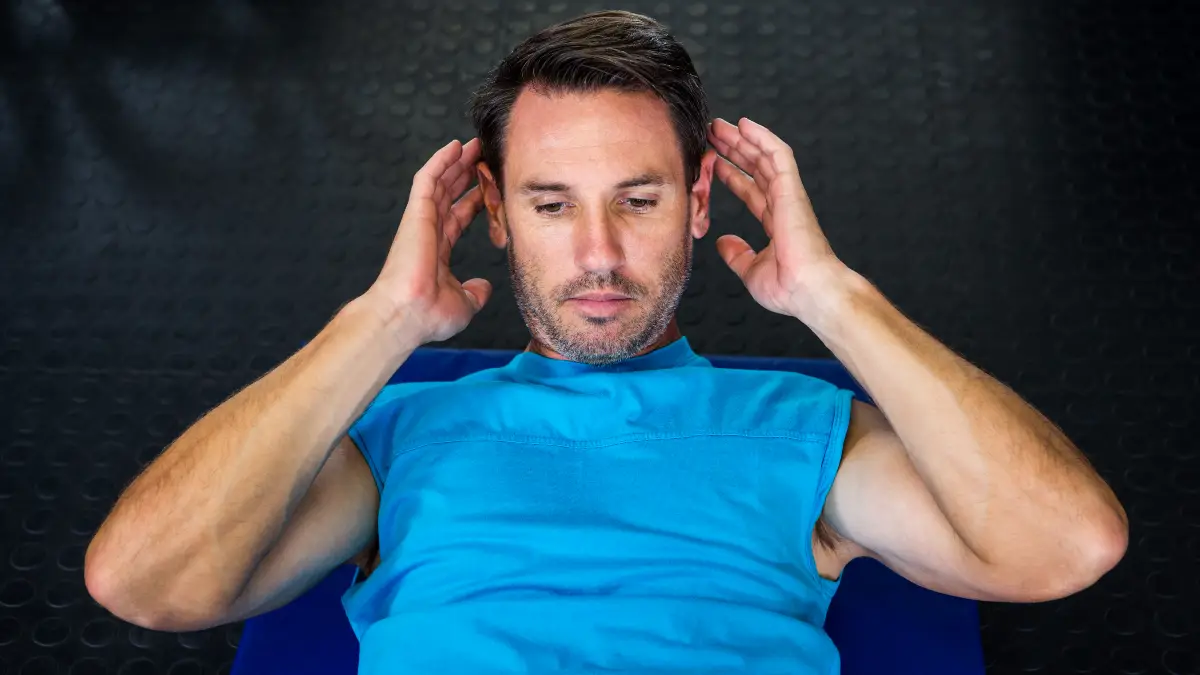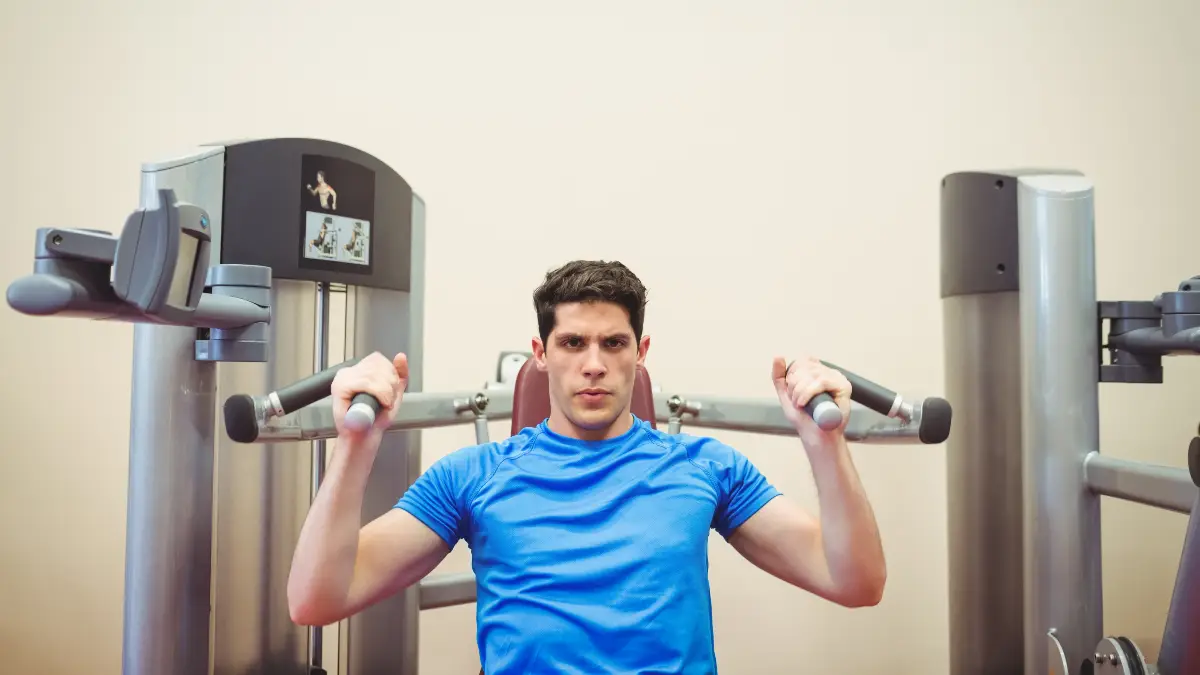You’ve put in the reps, the sets, the sweat—so why aren’t you seeing the results you’ve earned? You feel stuck, tired, and maybe even a little beat up. It’s a frustrating cycle: you train with intensity, but the progress just isn’t there.
The issue isn’t a lack of effort during your workout. The real problem lies in what you do—or don’t do—the moment you stop lifting. Lasting gains are forged in the hours and days after you train.
This guide will show you how to master recovery by breaking down the 12 most common mistakes that sabotage your progress. You’ll get simple, pro-level fixes to finally unlock the gains you’ve worked so hard for.
1. You Stop Cold Without a Cool-Down

When you finish a hard set, it’s tempting to just stop and catch your breath. But stopping suddenly is a big mistake. It traps waste products in your muscles, slows down the delivery of nutrients, and can make you dizzy or extra sore. This hurts your readiness for the next workout.
Why It Kills Your Gains
When you stop moving, your heart is still pumping fast, but your leg muscles are no longer helping to push blood back up. This can cause blood to pool in your legs, which is why you might feel lightheaded.
A proper 5-10 minute cool-down helps your heart rate come down gradually. This is much safer for your heart. It also helps clear out metabolic waste from your muscles.
Think of a cool-down as the bridge from a high-stress state to a recovery state. Your body can only repair and build muscle when it’s in a “rest and digest” mode. Skipping the cool-down leaves your body stuck in between.
Blood flow is poor, so the nutrients from your post-workout meal can’t get where they need to go. It’s like trying to build a house when the delivery trucks are stuck in traffic.
The Pro-Level Fix
Spend the last 5-10 minutes of your session doing some light cardio. A walk on the treadmill, a slow spin on a bike, or some easy rowing will work. Your goal is to get your heart rate down to about 100-120 beats per minute before you stop completely.
2. You Skip Stretching and Foam Rolling

Neglecting mobility work after a workout leads to stiff muscles, a limited range of motion, and worse muscle soreness. This makes it hard to use good form in your next session, creating a cycle of poor movement and bad results.
Why It Kills Your Gains
The time after your workout is perfect for static stretching, which means holding a stretch for 20-45 seconds. This helps lengthen muscles and reduces stiffness.
It also helps your body shift into a relaxed state, which is key for recovery. When you release a stretch, blood flow rushes back to the area, which can help deliver nutrients.
Foam rolling is another great tool. It can improve your range of motion and reduce soreness by loosening up your muscles and the connective tissue around them. Stretching and foam rolling do different things, but they work together.
Stretching calms down your nervous system—the “master controller.” Foam rolling works on the “local hardware”—your muscles. After a workout, your nervous system is fired up, and your muscles are physically tight. Stretching helps it relax, and foam rolling fixes the tightness. Doing both gives you a complete fix.
The Pro-Level Fix
After your cool-down, spend 5-10 minutes on static stretching. Focus on the muscles you just trained. Hold each stretch for 30-45 seconds and breathe deeply.
Then, spend another 5-10 minutes foam rolling. Roll slowly over large muscle groups. If you find a tender spot, hold the pressure there for 20-30 seconds. Some find that foam rolling before stretching gives the best results.
3. You Eat the Wrong Food (or Nothing at All)

Eating junk food—or nothing—after a workout starves your muscles of the fuel they need to repair and grow. This mistake stops muscle building and can even cause your body to break down muscle tissue, defeating the purpose of your workout.
Why It Kills Your Gains
Weight training creates tiny tears in your muscle fibers. Eating protein provides the amino acids needed to repair this damage and build the muscle back stronger. This process is called Muscle Protein Synthesis (MPS).
At the same time, your workout uses up your muscles’ main fuel source: glycogen. You need to refill these stores for your next session. If you wait just two hours to eat carbs, you can cut your refueling rate by 50%.
You may have heard of the “anabolic window.” This is the time after a workout when your muscles are extra sensitive to nutrients. While it’s not a strict 30-minute window, it’s still smart to eat soon after you train.
The quality of your food matters a lot. Junk food can slow digestion, delaying the delivery of nutrients to your muscles. Carbs are also key. They act as a gatekeeper for muscle growth. When you’re low on fuel, your body activates a sensor that can block muscle building.
Eating carbs shuts this sensor off, allowing the muscle-building process to start. Protein provides the bricks, but carbs tell the construction crew it’s time to build.
The Pro-Level Fix
Aim to eat a meal or shake within 60-90 minutes of finishing your workout. It should contain high-quality protein and fast-digesting carbs. A good rule is a 3:1 or 4:1 ratio of carbs to protein.
- Protein: Aim for 20-40 grams. Good sources include whey protein, eggs, or lean chicken breast.
- Carbs: Good choices for fast-digesting carbs include bananas, white rice, or potatoes.
4. You Don’t Drink Enough Water

Being dehydrated is one of the fastest ways to kill your performance and recovery. When you’re dehydrated, your blood gets thicker, which makes it harder to transport nutrients and remove waste. It can even directly reduce the rate of muscle protein synthesis, putting the brakes on your progress.
Why It Kills Your Gains
Your body needs water for nearly every process. Good hydration is essential for moving nutrients into muscle cells and flushing out waste. Even being mildly dehydrated—losing just 2% of your body weight through sweat—can hurt your performance and increase your risk of cramps.
Dehydration can make recovery take up to 50% longer. It can also reduce your body’s muscle-building potential by up to 20%. It causes a system-wide failure.
It disrupts your transport system (blood flow), your cellular machinery (muscle building), and your structural integrity (cell volume). When you sweat, your blood becomes thicker and harder to pump.
At the cellular level, water loss disrupts the signals for muscle repair. Trying to recover in a dehydrated state is like trying to work during a system-wide shutdown.
The Pro-Level Fix
A simple way to measure fluid loss is to weigh yourself before and after your workout. For every pound you lose, aim to drink 16-24 ounces of fluid over the next few hours. Your drink should contain electrolytes, especially sodium, to help your body retain the fluid.
You can use a sports drink or simply have a salty snack with water. A quick visual check is your urine color; it should be a pale, straw-yellow. Dark yellow urine is a clear sign you need to drink more.
5. You Confuse Rest with Sitting Still

After a tough workout, it’s easy to collapse on the couch for hours. But this creates a stagnant environment in your body. It leads to muscle stiffness, poor circulation, and can even cancel out some of the positive effects of your training session.
Why It Kills Your Gains
There’s a big difference between passive rest (sitting still) and active recovery. Complete inactivity can actually hurt your recovery.
Active recovery, which is low-intensity movement like walking or yoga, has been shown to improve blood flow. This helps deliver fresh nutrients and remove waste products from your muscles.
Beyond that, a sedentary lifestyle is a major health risk on its own. It’s linked to poor circulation, inflammation, and a higher risk of many diseases. This is true even for people who exercise regularly.
Research shows that sitting for 10 or more hours a day increases your risk of heart disease, no matter how hard you work out. A workout creates a “metabolic echo” where your body is better at using nutrients.
Sitting for a long time silences this echo. It actively works to reverse the positive changes you just stimulated. You’re basically telling your body to ignore the “get better at handling fuel” signal you just sent it.
The Pro-Level Fix
Break up long periods of sitting. A simple rule is to get up and walk around for five minutes every hour. In the hours right after a workout, a 20-45 minute walk is a great form of active recovery. Doing some light stretching in the evening is much better than staying on the couch.
6.You Sacrifice Sleep

Skipping sleep is the single best way to destroy your progress. Sleep isn’t just rest. It’s when most of your tissue repair, muscle growth, and hormone regulation happens. Without enough quality sleep, you’re not just tired; you’re actively stopping your body from rebuilding itself.
Why It Kills Your Gains
Sleep is a powerful muscle-building state. During deep sleep, your body releases a large amount of Human Growth Hormone (HGH), which is key for repairing tissues and stimulating muscle growth. Not getting enough sleep cuts this HGH release short.
Blood flow to your muscles also increases during sleep, helping with repair. Lack of sleep directly hurts athletic performance, leading to slower reaction times and a higher risk of injury. It’s also bad for your body composition.
One study found that when people were in a calorie deficit, the sleep-deprived group lost more muscle and less fat than the group that got enough sleep. Sleep is the master switch that turns on the hormones needed to turn your training into actual muscle growth. The workout is the stimulus, and food is the raw material.
But the signal to start construction comes during deep sleep. Sacrificing it means you’ve done the work and bought the materials, but you never flipped the switch to start building.
The Pro-Level Fix
Aim for 7-9 hours of quality sleep per night. If you’re training hard, you might need up to 10 hours. Stick to a consistent sleep schedule, even on weekends. Make your bedroom cool, dark, and quiet.
Avoid screens for at least an hour before bed, as the blue light can mess with your sleep hormones. Also, avoid caffeine and alcohol close to bedtime.
7. You Believe in the “Recovery” Beer

Drinking alcohol after a workout, especially a lot of it, is a direct act of sabotage. It dehydrates you, messes up your sleep, and directly blocks the pathways responsible for building muscle. It stops the muscle-building process cold.
Why It Kills Your Gains
The worst effect of alcohol after exercise is that it directly stops Muscle Protein Synthesis (MPS). Research clearly shows that alcohol lowers the rate of muscle building. This effect lasts for at least 12 hours, even after the alcohol is out of your system.
Alcohol does this by shutting down the mTOR signaling pathway, which is the master regulator of muscle growth. Studies show that drinking after a workout not only slows down MPS but completely cancels out the increase in MPS caused by the workout.
This means the main benefit of your training is erased. Alcohol also makes you dehydrated and ruins your sleep quality, making the problem even worse.
It’s not just a minor setback; it’s a guided missile aimed directly at the machinery of muscle growth. Even if you eat a perfect post-workout meal, the alcohol prevents the “on switch” from working.
The Pro-Level Fix
The best plan is to avoid alcohol completely in the hours after a workout. If you do drink, wait at least 4-6 hours and have it with a protein-rich meal.
Make sure you rehydrate with water and electrolytes before having any alcohol. You have to accept that even moderate drinking can hurt your gains.
8. You Live the “No Days Off” Lie

The “no days off” mindset is a direct path to poor results. Pushing your body too hard, too often, without enough recovery leads to overtraining. This is a serious condition of chronic fatigue, declining performance, and hormonal problems that can take months or even years to fix.
Why It Kills Your Gains
Training works on a simple principle: stress and adaptation. The workout is the stress, but the growth happens during recovery. Without enough recovery, your body doesn’t adapt; it just gets more tired.
When this goes on for too long, it can lead to Overtraining Syndrome (OTS). This isn’t just being tired; it’s a serious disorder. Symptoms include a big drop in performance, constant fatigue, mood problems, poor sleep, and getting sick more often.
Overtraining is a multi-system failure of your nervous, endocrine, and immune systems. The drop in performance is the final result of this deep internal crash. Often, mood changes like irritability show up first.
Then, you might start getting more colds. The performance drop happens last. By the time your performance tanks, a lot of internal damage has already been done.
The Pro-Level Fix
Your training plan must include rest days and deload weeks, where you lower the volume and intensity. You have to balance hard training with enough recovery time.
Pay attention to early warning signs: constant fatigue, performance drops, irritability, and poor sleep. On your off days, light activity like a walk can be better than doing nothing at all.
9. You Push Through Pain

Ignoring your body’s signals—like deep fatigue, extreme soreness, or nagging aches—is a fast track to a major injury. This “warrior” mindset overrides the feedback system that is designed to keep you safe and help you make progress for the long haul.
Why It Kills Your Gains
Listening to your body is a key part of smart training. Pushing through serious pain or fatigue can turn a small issue into a big injury that forces you to take a lot of time off.
A better way is to use autoregulation. This means adjusting your daily training based on how your body feels. On days you feel strong and rested, you can push harder. On days you feel tired, you scale back.
This flexible approach helps you make better progress with less risk of injury. Studies show that this method can be more effective than a rigid plan because it matches the workout to what your body can actually handle that day.
Training shouldn’t be a dictatorship where a plan is forced on your body. It should be a conversation. The plan asks a question (“Can you handle this today?”), and your body’s feedback provides the answer. Autoregulation is listening to that answer.
The Pro-Level Fix
A simple way to use autoregulation is with the Rate of Perceived Exertion (RPE) scale. You rate the effort of a set from 1-10, where 10 is an all-out effort. A program might say “3 sets of 5 at an RPE of 8.”
This means you should finish the set feeling like you could have done two more reps. The weight you use to hit that RPE 8 will change based on how you feel each day. Keeping a training journal is also a great idea.
Note your sleep quality, stress levels, and energy. This helps you see patterns and make smarter choices. If you constantly feel sore and tired, that’s a clear signal you need more recovery, not more intensity.
10. You Forget Your Most Important Muscle (Your Brain)

Physical training is also a huge source of mental stress. If you don’t recover mentally, you can face burnout, a loss of motivation, and performance anxiety. These issues can stop your physical progress just as much as a physical injury.
Why It Kills Your Gains
The mind and body are connected. The stress of training and life can lead to burnout and anxiety. Mental fatigue and physical fatigue are closely linked.
A key part of mental recovery is to detach. Constantly thinking about your training, performance, and diet keeps your brain from truly recovering. Hobbies, friends, and interests outside of fitness are vital for preventing burnout.
Practices like mindfulness and meditation can also help regulate your nervous system and reduce anxiety. Think of mental recovery like defragmenting a computer’s hard drive. Intense training creates mental clutter—stress, anxiety, and self-criticism.
If you don’t have a process to clear this clutter, your “operating system” gets slow and crashes. Mental recovery techniques help you organize the mental data from your training, file it away, and clear the cache so the system can run smoothly next time.
The Pro-Level Fix
Schedule time to detach from your sport. This could be 24 hours after a big event where you don’t think about training at all. A daily 5-10 minute practice of mindfulness or focused breathing can help manage stress.
After a workout, take five minutes to reflect on what went well and one thing to improve. This provides closure and stops you from endlessly criticizing yourself. It’s also important to “take off the athlete hat” and connect with other parts of your identity.
11. You’re Flying Blind Without Data

Relying only on how you “feel” can be misleading. You might push too hard on a day you feel good but are actually over-stressed, or hold back on a day your body is ready to perform. Without objective data, your training is based on guesswork.
Why It Kills Your Gains
Wearable technology now lets you track real markers of recovery. One of the most valuable is Heart Rate Variability (HRV).
HRV measures the variation in time between your heartbeats. A high HRV generally means you are well-recovered and ready for stress. A low HRV suggests your body is under stress and needs more recovery.
Tracking sleep quality—especially Deep and REM sleep—also gives you key data on how well your body is repairing itself. This data helps you make smarter training decisions.
For example, if you wake up with a very low HRV and poor sleep, it’s a strong sign that you should reduce your training intensity for the day. This can prevent you from digging yourself into a hole.
Tracking these numbers is like having an internal weather forecast for your body. How you feel is like looking out the window—it can be deceptive. The data gives you the barometric pressure. It provides context for your subjective feelings, allowing for a much smarter approach to training.
The Pro-Level Fix
Consider using a wearable device or a chest strap to track your morning HRV and sleep. It’s important to get a baseline over 2-4 weeks. Don’t make decisions based on one day’s reading; look for trends.
A steady downward trend in HRV is a major red flag that you’re getting too fatigued. Use this data to guide your training. If your HRV is way below your baseline, it might be a good day for active recovery or a lighter workout.
12. You Chase Fads Instead of Science

Spending a lot of time and money on trendy recovery tools like ice baths or massage guns without knowing how they work can be a waste. At worst, it can even be counterproductive. These tools should be extras, not replacements for the basics.
Why It Kills Your Gains
The foundation of recovery is sleep, nutrition, and hydration. No fancy gadget can make up for a lack of these basics.
Ice Baths: The main benefit of ice baths is reducing inflammation and soreness. But this can be a double-edged sword. Some research suggests that always blunting inflammation right after a workout might also blunt some of the signals needed for long-term muscle growth. So, their use should be strategic, not daily.
Compression Garments: These can help with circulation and reduce swelling. However, studies show they provide only a small and sometimes inconsistent benefit for soreness.
Massage Guns: These can be good for reducing soreness and relaxing tight muscles. But they work best when used with other recovery methods, not by themselves.
Think of recovery as a pyramid. The large, essential base is made of sleep, nutrition, and hydration. The middle layer is proven, low-cost methods like cool-downs and stretching. The small peak is made of advanced tools.
Many people chase the peak without having a solid base. This is a recipe for wasted time and money. An extra hour of quality sleep will always do more for you than 10 minutes in compression boots.
The Pro-Level Fix
You must master the basics first. Before you buy expensive gadgets, make sure your sleep, nutrition, and hydration are excellent for at least 3-6 months. Once your foundation is solid, you can use advanced tools for specific reasons.
Use an ice bath to manage severe soreness during a very tough training block, but probably avoid it after every workout if muscle growth is your main goal.
Compression gear can be useful during travel or after a hard leg day to help with circulation.
Use a massage gun to work on specific tight spots, as part of a larger stretching and foam rolling routine. Always track whether a new tool is actually making a positive, measurable difference for you.


